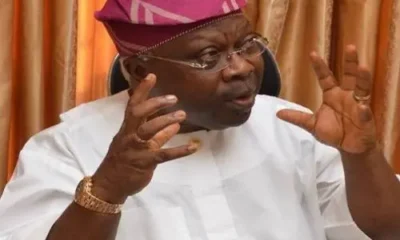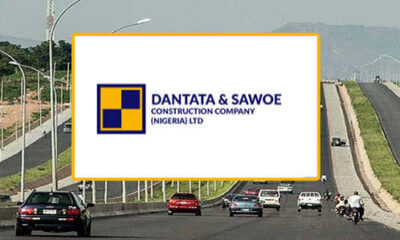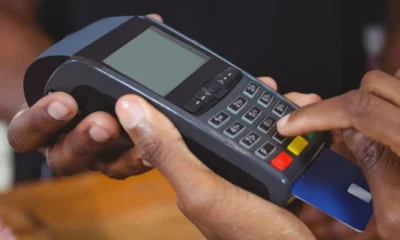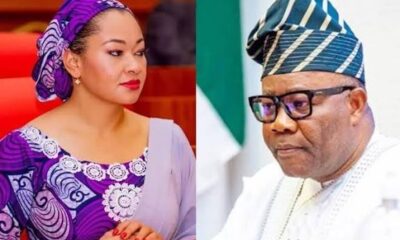Business
‘How DisCos Lost N358bn In 3 Months’
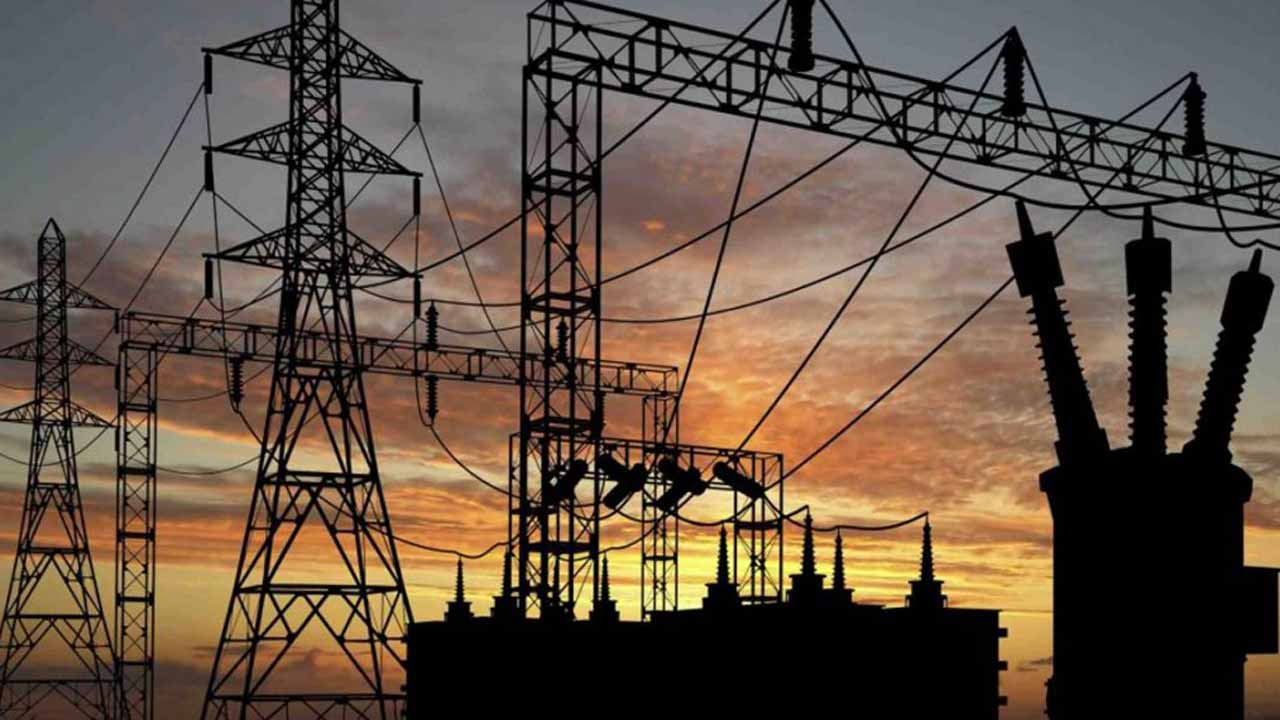
The Nigerian Electricity Regulatory Commission (NERC) has stated that the 11 electricity Distribution Companies (DisCos) collected N546.71bn from their customers in the second quarter of 2025.
However, the regulatory body said the sum is less 60 per cent of the electricity transmitted to them from the grid as DisCos’ experienced energy accounting inefficiencies, as well as the allocation of energy to the different customer classes/bands, resulted in a billing shortfall of N167.25bn.
Also, customers failed to pay N190.64bn of electricity bills given them, thus the DisCos lost N357.89bn to inefficiencies and customers’ apathy to electricity bills.
In its quarterly report for second quarter 2025, NERC stated that the total energy taken by all DisCos in 2025/Q2 was N909.59bn while the total energy billed was N742.34bn.
The report added that disaggregated performance of the DisCos showed that Eko DisCo recorded the highest billing efficiency of 96.67 percent, while Yola DisCo recorded the lowest billing efficiency of 58.38 percent
DisCos prioritising commercial customers
The report also noted that DisCos often skewed electricity supply during the quarter with energy delivered more to commercial customers.
It added that only Port Harcourt DisCo recorded balanced distribution approved by the commission during the period.
It said Eko DisCo and Kano DisCos delivered more energy to commercially viable feeders while also potentially recording higher EAE on those feeders while Benin, Kaduna and Ibadan DisCos delivered more energy less commercially viable feeders.
FG incurred N514.35bn debt
It said the federal government incurred a subsidy debt of N514.35bn which is owed to electricity generating companies.
“It is important to note that due to the absence of cost reflective tariffs across all DisCos, the Government incurred a subsidy obligation of N514.35bn; this represents a N22.04bn (-4.11 percent) reduction in FGN subsidy compared to 2025/Q1 (N536.40bn).
Although the subsidy obligation of the government decreased in naira terms (-N22.04bn), it accounted for 59.60 per cent of the total GenCo invoice, which is a 0.44 per cent increase compared to 2025/Q1 when subsidy accounted for 59.16 percent of the total GenCo invoice.”
The report added that the six international bilateral customers being supplied by GenCos in the NESI made a payment of $9.01m against the cumulative invoice of $17.54m issued for services rendered in 2025/Q2, translating to a remittance performance of 51.33 percent.
“The domestic bilateral customers made a cumulative payment of N1.401bn against the invoice of N2.796bn million issued to them for services rendered in 2025/Q2, translating to 50.10 percent remittance performance.
It is noteworthy that one domestic bilateral customer made payments during 2025/Q2 for outstanding MO invoices from previous quarters. The Market Operator received N10.53m from Trans-Amadi (OAU/FMPI) towards outstanding invoices from previous quarters.”
“The special customer (Ajaokuta Steel Co. Ltd and the host community) did not make any payment towards the N1.27bn (NBET) and N0.12 billion (MO) invoices received in 2025/Q2.
This continues a longstanding trend of non-payment by this customer, and the Commission has communicated the need for intervention on this issue to the relevant FGN authorities.”
60 percent of installed generation capacity not available
The report added that 60.40% of the installed capacity across the twenty-eight (28) grid-connected power plants was not available for dispatch onto the grid.
It stated that overall, 10 power plants had availability factors above 50%, with Ikeja_1 power plant recording the highest availability factor at 99.34%.
“On the other end of the spectrum, Alaoji_1 recorded a Plant Availability Factor (PAF) of 0% in 2025/Q2, i.e. the plant was not available to dispatch any energy onto the grid throughout the quarter.
The gross PAF of 39.60% recorded in 2025/Q2 represents a 0.21 percent increase relative to the 39.39% PAF that was recorded in 2025/Q1.
Significant increases in PAF were recorded in Geregu_1 (+34.63pp), Zungeru_1 (+15.36pp), and Egbin_1 (+7.68pp) power plants across the two quarters.”
“Conversely, the PAF of Odukpani_1 decreased significantly by 19.78pp during the quarter (35.72% in 2025/Q2 compared to 55.50% in 2025/Q1). Reductions in PAF were also recorded in Rivers_1 (-14.60pp), Omoku_1 (-11.58pp), and Olorunsogo (-7.13pp) power plants.”
It added that the average hourly generation on the grid in 2025/Q2 was 4,501.06MWh/h, which translates to a total generation of 9,830.31GWh.
“The average hourly generation and the total generation decreased by 5.65% and 4.60% respectively in 2025/Q2 compared to 2025/Q1; the hourly generation decreased from 4,770.59MWh/h generated in 2025/Q1 to 4,501.06MWh/h (-269.53MWh/h), while the total generation decreased from 10,304.47GWh generated in 2025/Q1 to 9,830.31GWh (-474.15GWh) in 2025/Q2. The decrease in quarterly generation can be attributed to a decrease in load offtake by the grid-connected customers.”
“In total, eighteen (18) plants recorded decreases in their average hourly generation across the quarters. Significant decreases in average hourly generation were recorded in Odukpani_1 (-100.40MWh/h), Geregu_2 (-81.47MWh/h), Delta_1 (-68.47MWh/h), Shiroro_1 (-46.07MWh/h), Afam_2 (-34.77MWh/h) and Rivers_1 (-31.40MWh/h) power plants.”
NNPC gets permission for 20.8 megawatts solar energy
It added that captive power generation permits are issued to entities that intend to own and maintain power plants exclusively for their consumption, i.e. no sale of electricity generated from the plant to any third party.
As such, it approved the renewal of the captive power generation permit to NNPC for the operation of a 20.8MW captive power plant at NNPC Towers, CBD, Abuja.
Also, a permit was issued to a mini-grid developer for the construction, operation, and maintenance of mini-grids with a distribution capacity exceeding 100kW and a generation capacity of up to 1MW.
“The Commission also issues registration certificates to developers for systems with a distribution capacity below 100kW. In 2025/Q2, the Commission issued six permits (gross capacity of 1.54MW)
Punitive measures need to be implemented for DisCos
Speaking with Daily Trust, Lanre Elatuyi, an electricity market analyst, said NERC needs to implement punishment for DisCos not meeting their revenue targets or the situation will continue.
He said the inability to collect over 30 per cent of the electricity given to them means electricity Generation Companies will not be paid in full and they in turn will not be able to pay their gas suppliers.
“This means the sector will be in a vicious cycle of debt and will be negative in the books of the Discos. So, that means that you cannot meet the payment obligations with the Nigerian Bulk Electricity Trading (NBET). So, if they are losing that much, that means, number one, they will not be able to meet the obligations, they will not be able to pay the GenCos, thus it has a cascading effect.”
“Also, the GenCos will not be able to engage in capacity expansion, they will not be able to carry out repairs and maintenance and attract finances from banks if their books are always in that way,” he said.
On what can be done, he said there should be an enforcement for a credit cover from where deductions will be made if DisCos did not meet up their revenue target.
“If that credit cover is enforced, I think they will be more eager to improve their collections. Ideally, you can’t just offtake electricity and there’s no credit risk mechanism to mitigate potential credit risk. So, the market expects them to put down a credit cover so that in case of payment default, the market goes into that cover and collects their money.”
“With that incentive, the distribution companies will be more efficient with their collections. But currently, everybody moves on. If that credit cover is being enforced, everybody will sit up. So, they have a systemic problem of rampant energy theft and low metering.” (Daily trust)
-

 African News20 hours ago
African News20 hours ago11 gunned down as mass shooting rocks South Africa
-

 Politics4 hours ago
Politics4 hours agoOsun gov’ship: My disqualification a huge joke – Omisore
-

 Business18 hours ago
Business18 hours agoBREAKING: Dantata & Sawoe ‘pays’ consultant $1.4 million Dangote project debt in bid to escape liquidation
-

 Opinion4 hours ago
Opinion4 hours agoInsecurity and plenty conspiracy theories
-

 Politics4 hours ago
Politics4 hours agoHow APC, ADC Benefit From PDP Crisis
-

 Business4 hours ago
Business4 hours agoCAC To Ban Unregistered PoS Operators From Jan 1
-

 News4 hours ago
News4 hours agoBrazilian Ship Intercepted with 25.5kg Cocaine at Lagos Port
-

 News4 hours ago
News4 hours agoAkpabio Denies Filing Fresh N200bn Suit Against Sen Natasha





